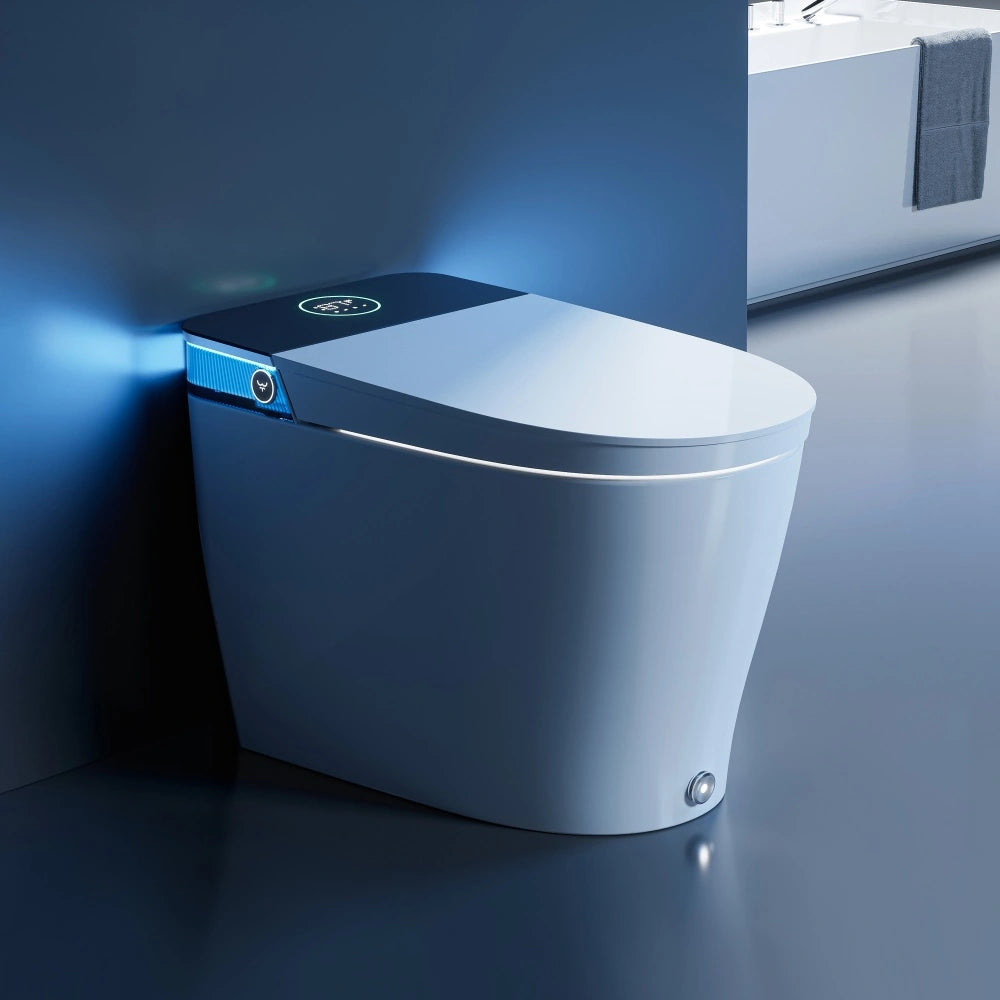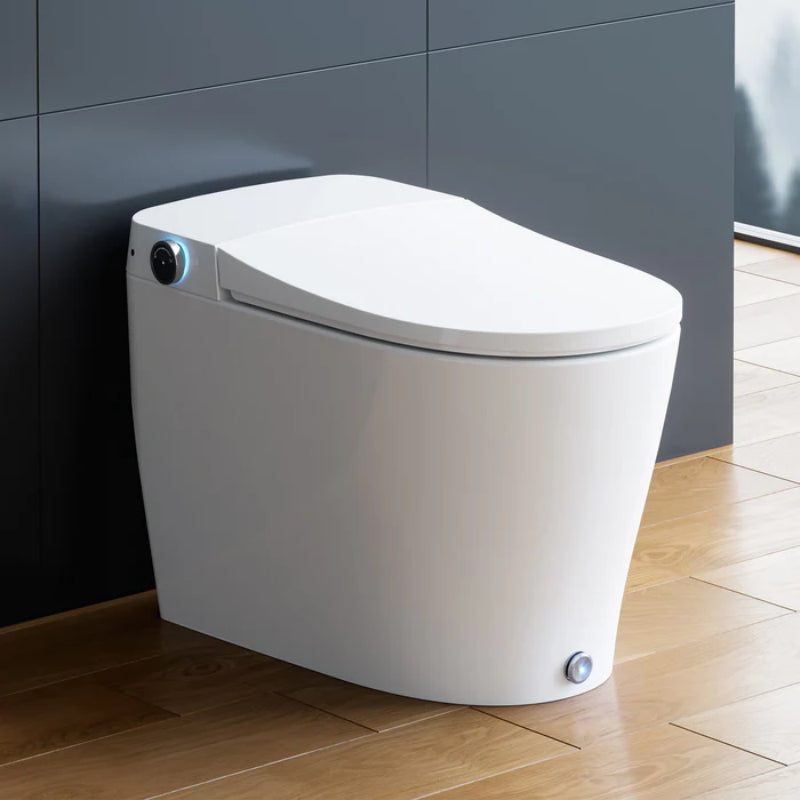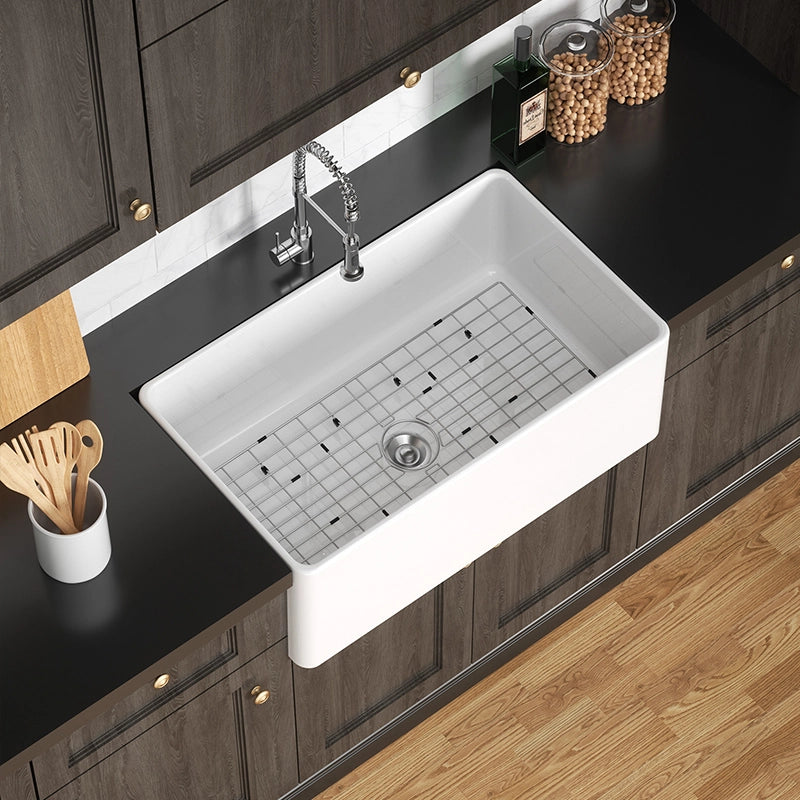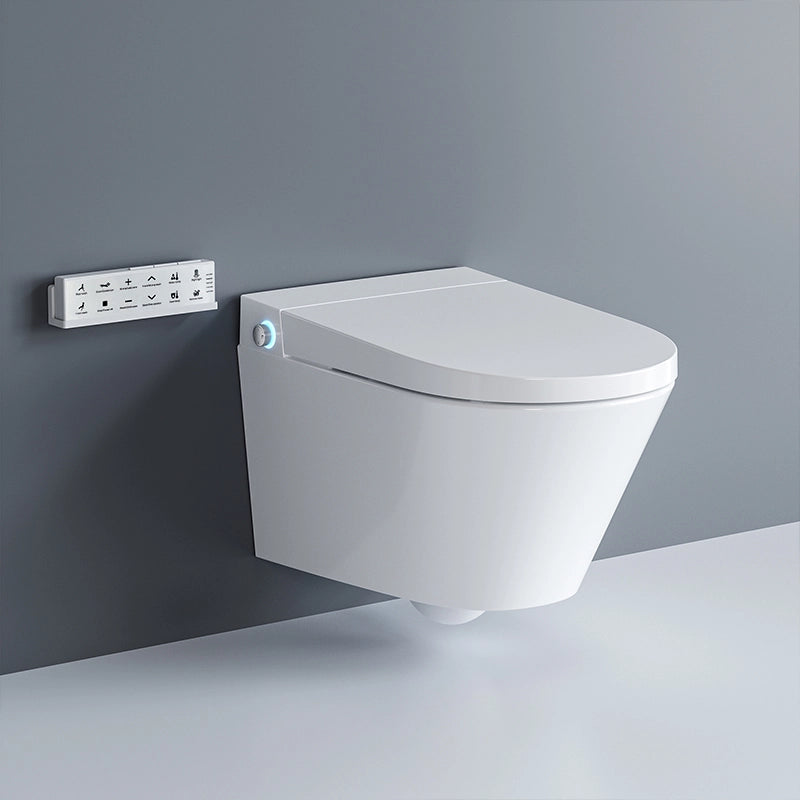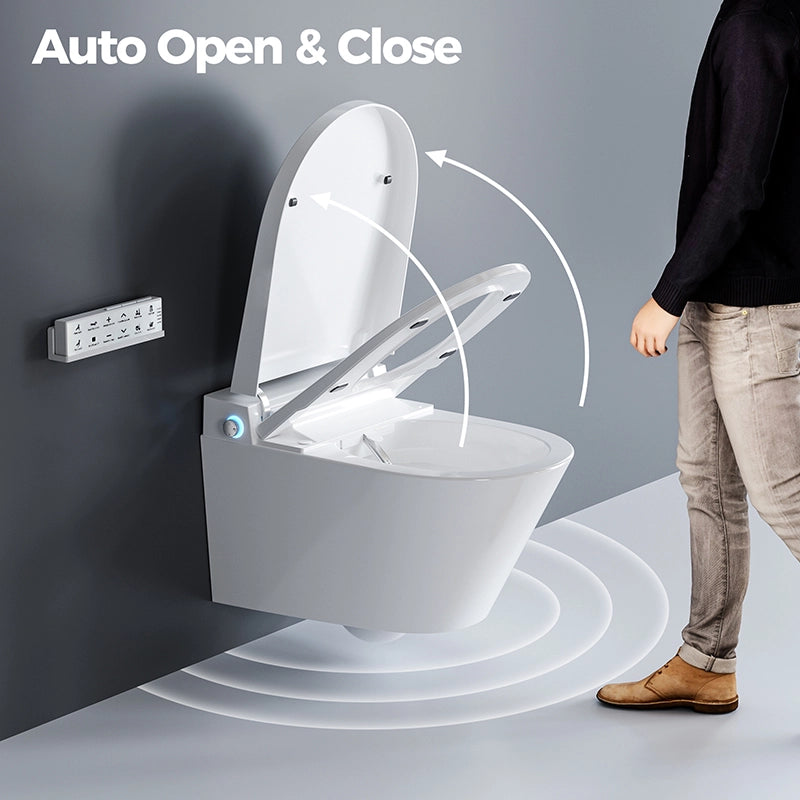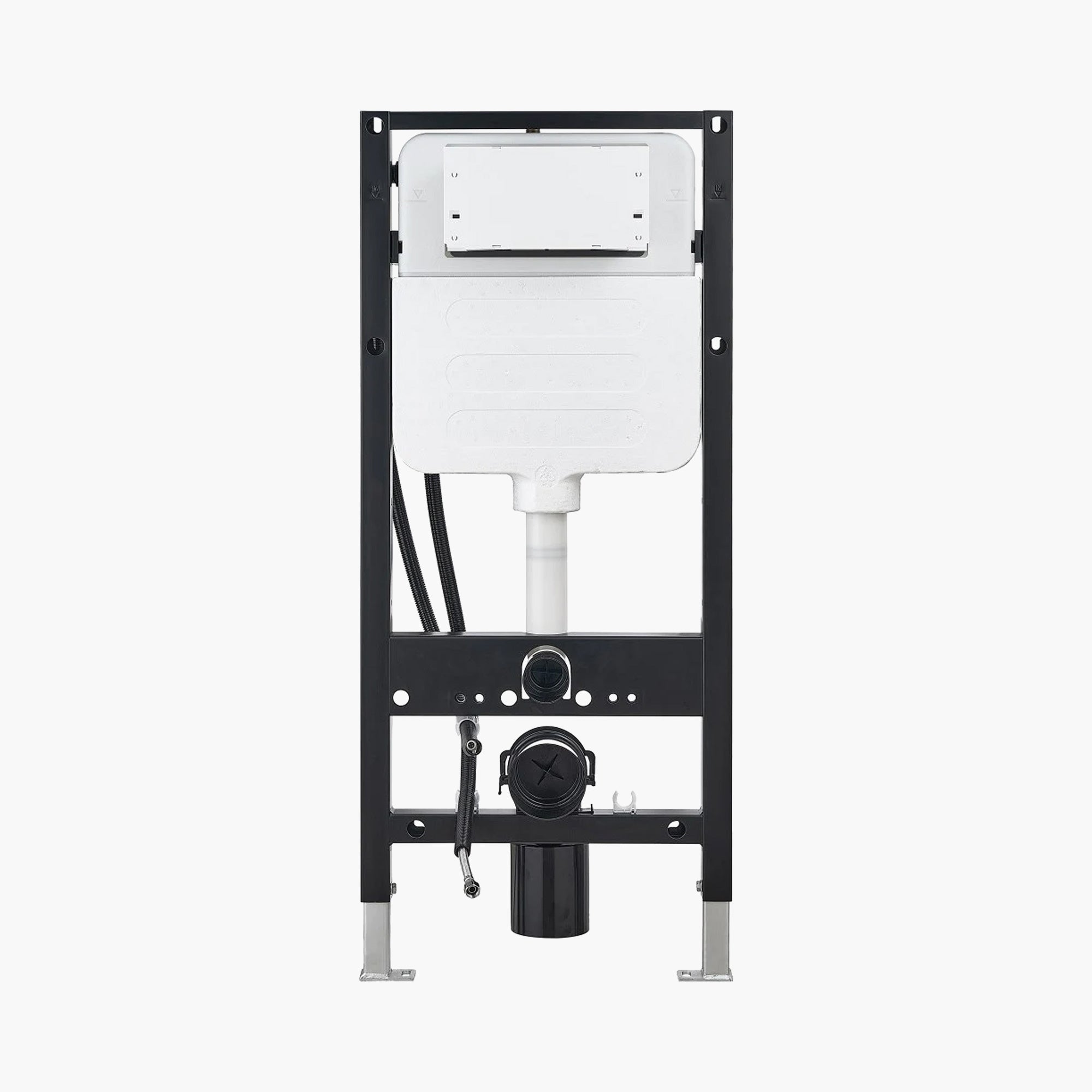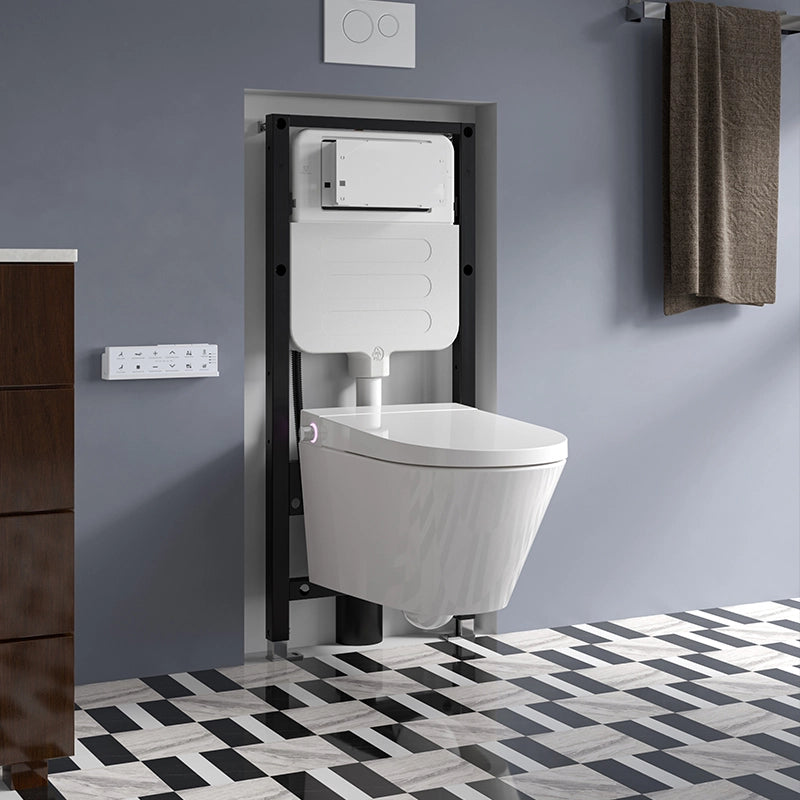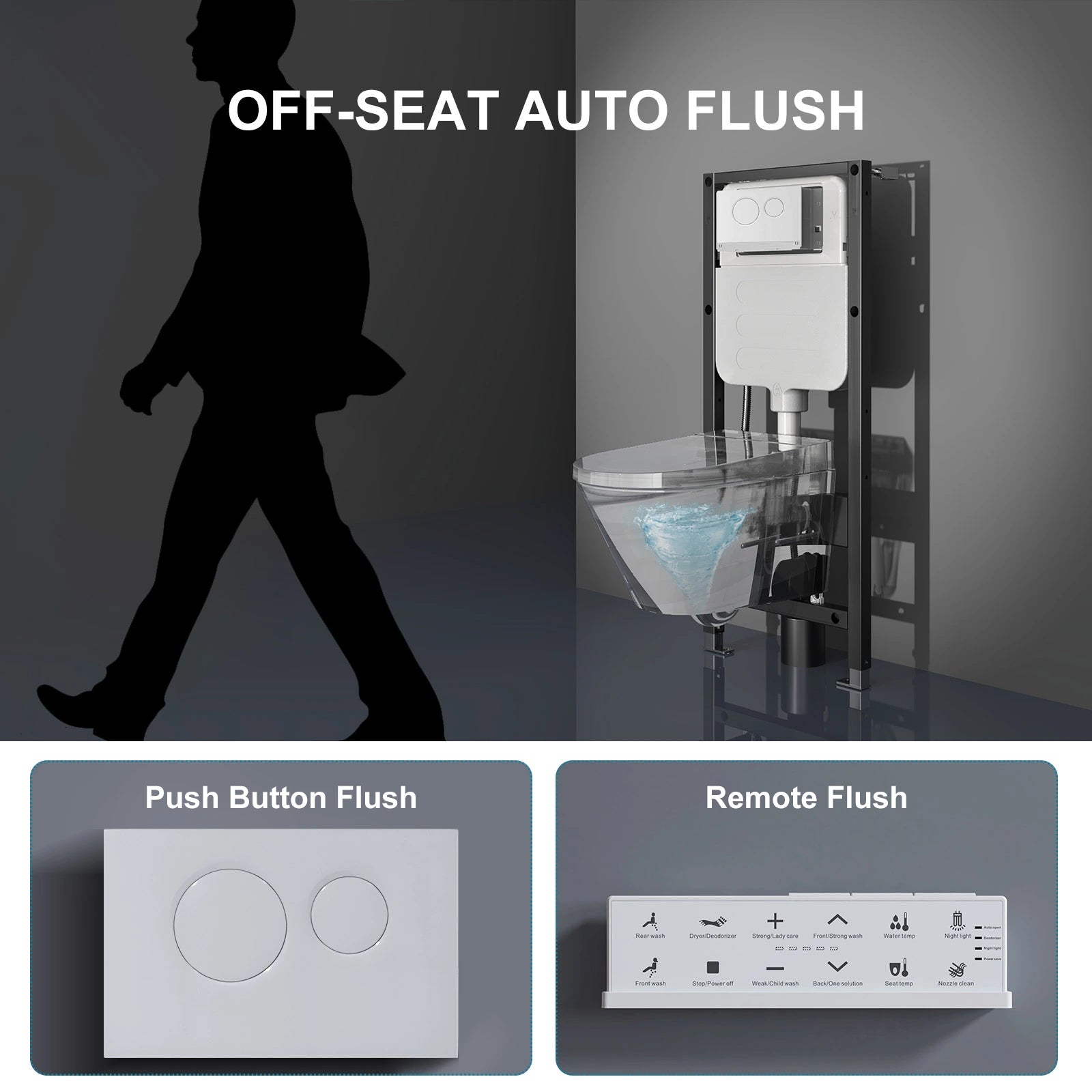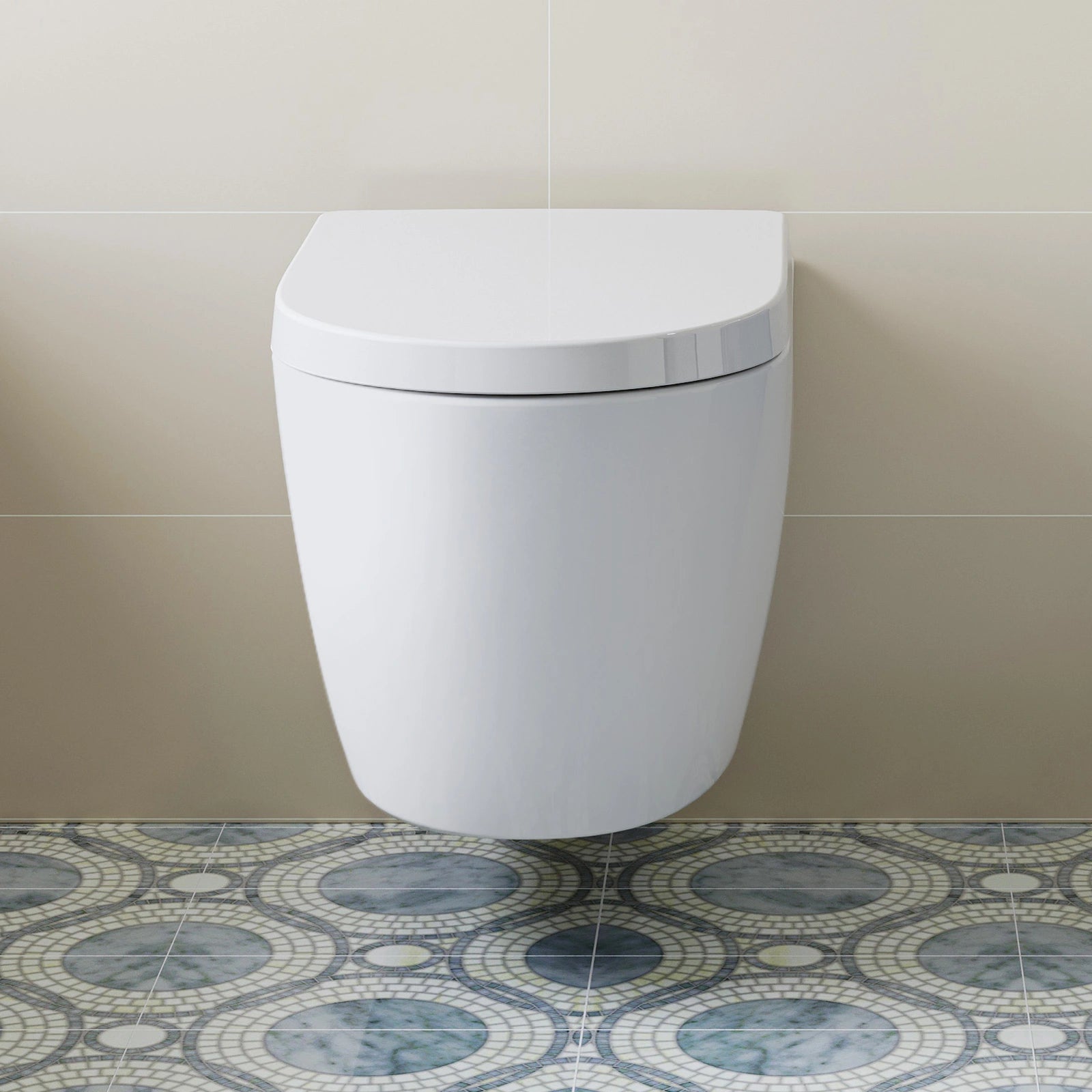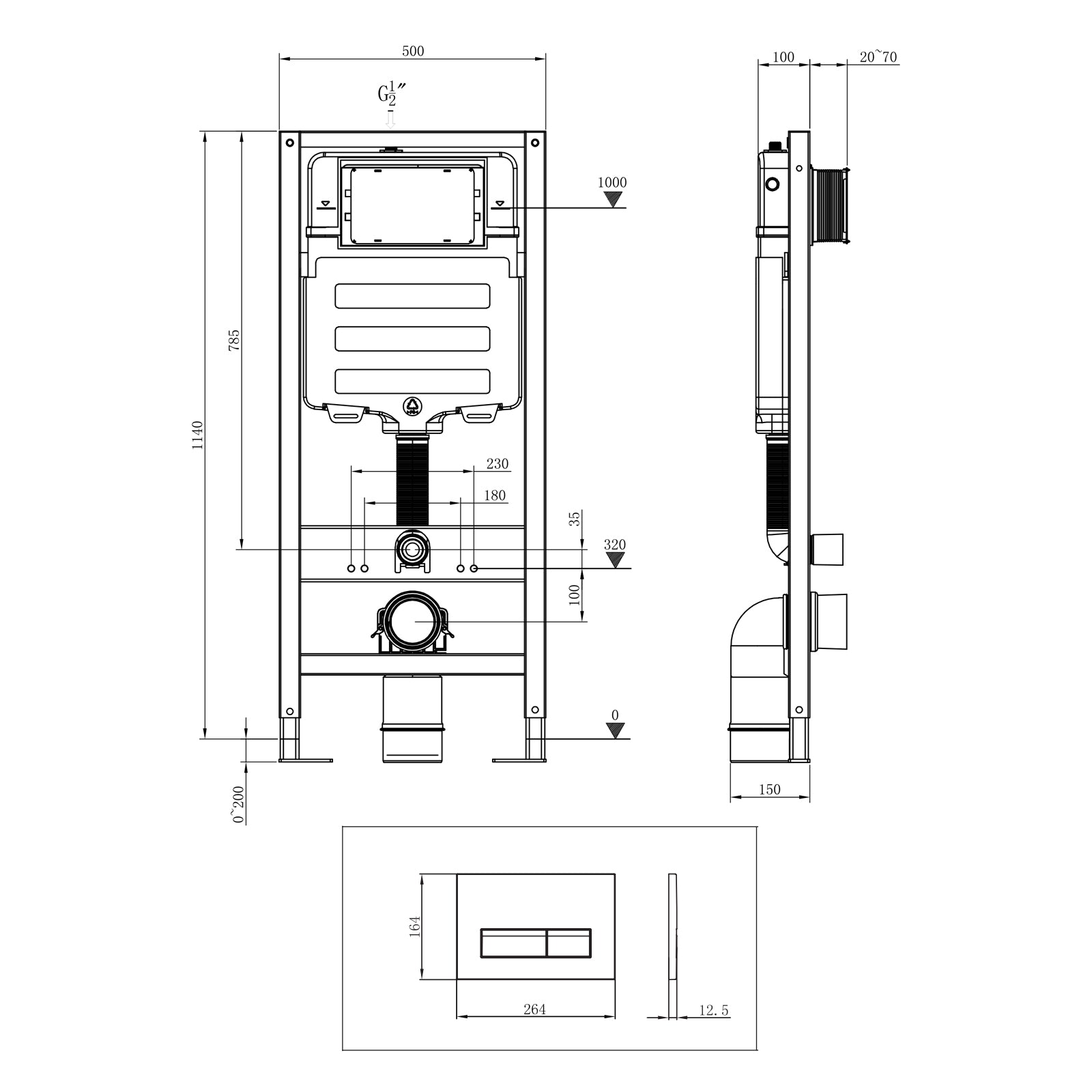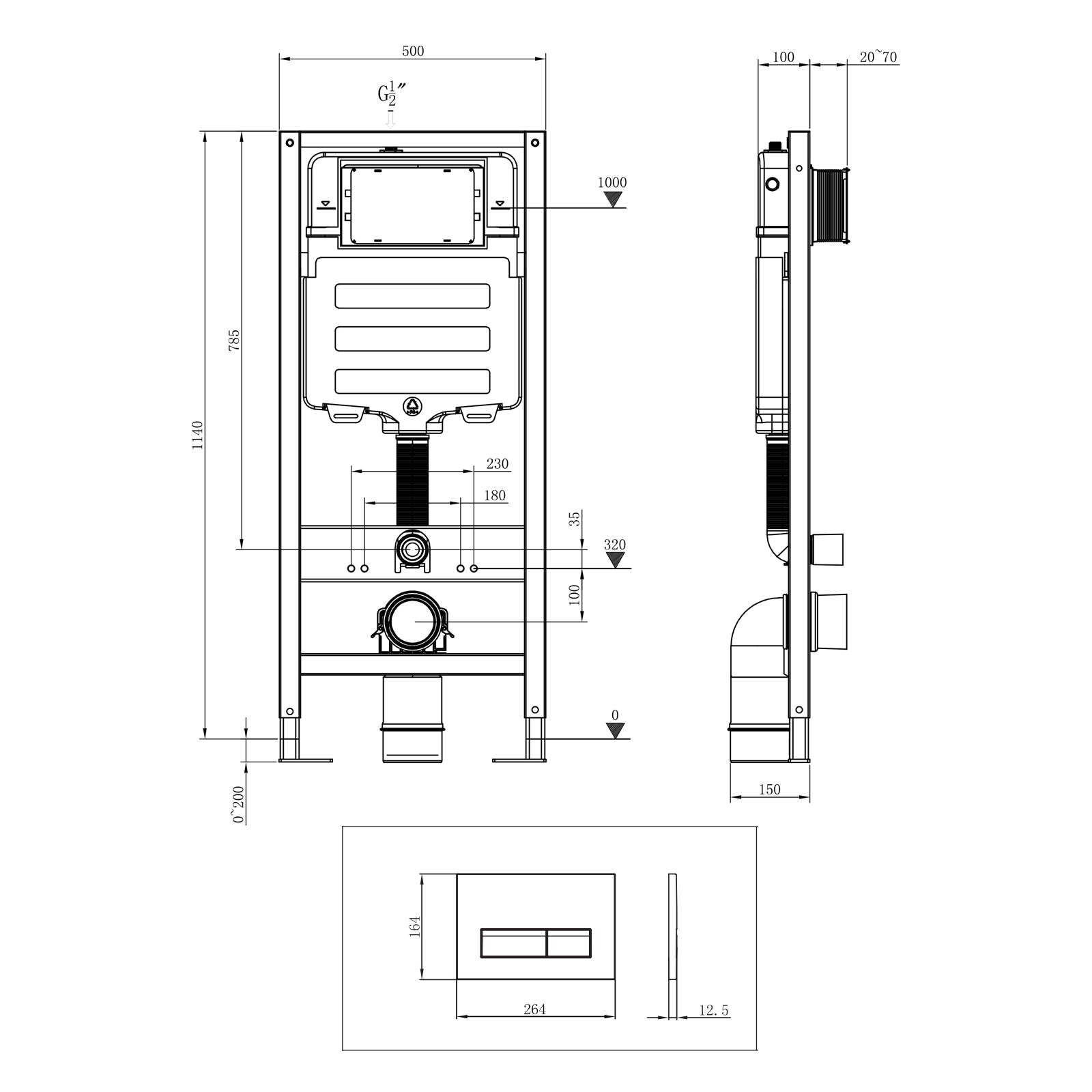Shop By Wall Hung Toilet Types
Why Wall-Mounted Toilets Are Gaining Popularity in Modern Bathrooms?
Wall-mounted toilets are becoming increasingly popular due to their stylish design, space-saving features, ease of cleaning, and customizable height. They offer a modern alternative to traditional toilets, making them an attractive option for contemporary bathrooms. As more homeowners seek to create functional yet aesthetically pleasing spaces, wall-mounted toilets are likely to remain a favored choice.
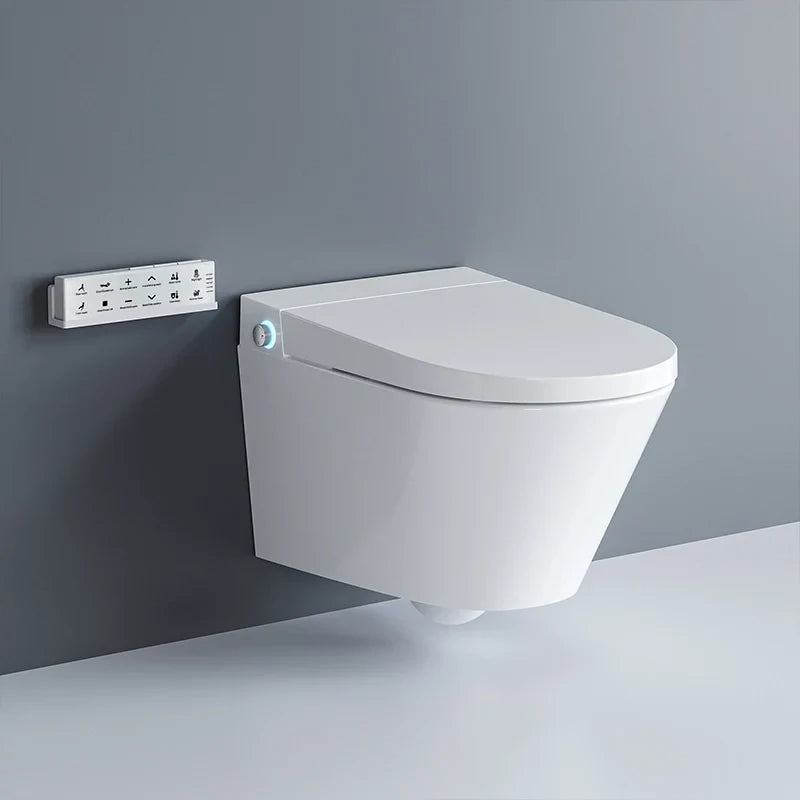
Wall-Hung Toilets Description
Wall-hung toilets are innovative fixtures that offer a modern and space-saving solution for bathrooms, which are Mounted directly onto the wall. The flushing components of wall-hung toilets are concealed within the wall or a carrier system to create a streamlined and space-saving design.
The Difference Between Wall-Hung Toilets and Floor-mounted Toilets
Wall-hung toilets and floor-mounted toilets differ in installation method, appearance, and cleaning ease. Wall-hung toilets are mounted directly onto the wall, creating a modern and minimalist look. In addition, wall-hung toilets are easier to clean underneath due to their elevated design, floor-mounted toilets may require more effort to clean around the base and floor area.
1. Installation Style
- Wall-Hung Toilet: Mounted directly to the wall; the tank is hidden inside the wall.
- Floor-Mounted Toilet: Attached to the bathroom floor; the tank is visible and connected to the bowl.
2. Aesthetic Appeal
- Wall-Hung: Sleek, modern, and minimalist—ideal for contemporary bathrooms.
- Floor-Mounted: More traditional in appearance, often bulkier due to visible components.
3. Space Saving
- Wall-Hung: Saves floor space and can make small bathrooms look more open.
- Floor-Mounted: Takes up more visible space; not ideal for compact layouts.
4. Height Customization
- Wall-Hung: Height can be adjusted during installation to suit user needs.
- Floor-Mounted: Standard fixed height (usually ~15–17 inches for the seat).
5. Cleaning & Maintenance
- Wall-Hung: Easier to clean under and around due to the floating design.
- Floor-Mounted: Harder to clean around the base and back of the unit.
The Importance of Wall-Hung Toilets
1.Space-saving Design: Wall-hung toilets are suspended from the wall, creating an open and airy look in the bathroom, making the space feel larger.
2.Easy Cleaning: The wall-hung toilet is not in direct contact with the floor; there are fewer areas for dirt and grime to accumulate.
3.Modern Appearance: Wall-hung toilets typically have a sleek and contemporary design that complements modern bathroom styles.
4.Hidden Tank Option: Some wall-hung toilets from HOROW come with concealed tanks installed within the wall, further enhancing the toilet's streamlined appearance and saving space in the bathroom.
How Does a Wall-Hung Toilet Work?
A wall-hung toilet features a unique design that allows it to be mounted directly on the wall, eliminating the traditional pedestal and tank. Instead, the bowl appears to "float" above the floor.
To flush, users simply press a button located on the actuator mounted on the wall. This actuator typically offers both full and partial flush options.
Behind the wall, a compact water tank is housed within a sturdy steel frame, called a carrier frame, which is anchored securely to the floor and wall studs. The toilet bowl attaches to this frame, ensuring stability.
Once plumbing is set, drywall is added to conceal the installation. The toilet is bolted into place on the carrier, requiring a compatible frame for proper alignment.
The tank is a single, molded plastic unit designed to prevent leaks and condensation. Its flush mechanism functions like a standard toilet but is more self-contained, minimizing potential malfunctions. For any needed repairs inside the tank, there's enough space for easy access.
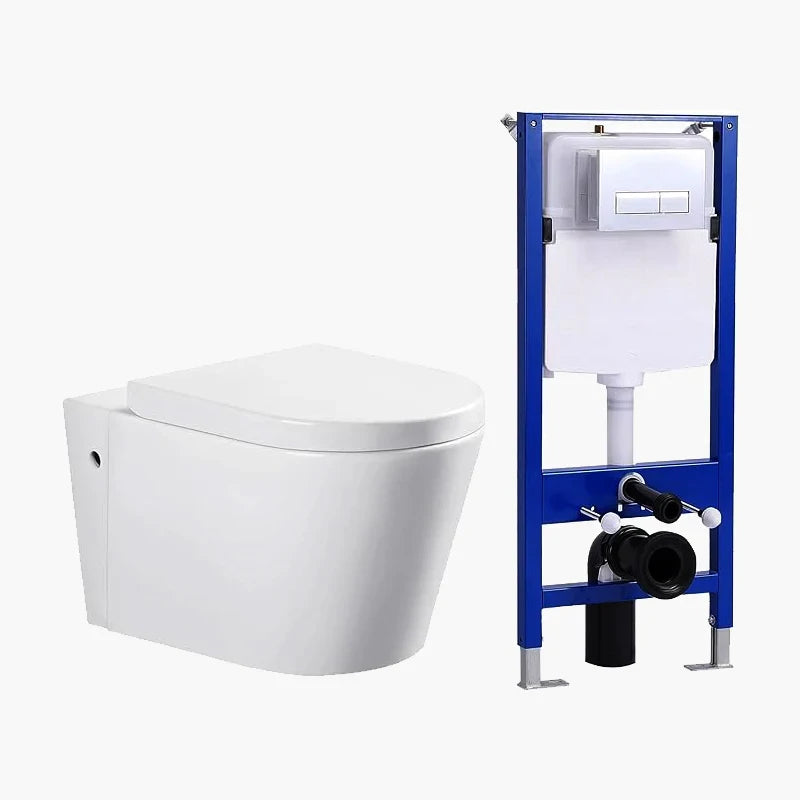
Factors Affecting the Weight Support of Wall-Mounted Toilets
Bowl Construction: Must be made from durable materials designed to fit the mounting system, ensuring adequate load support.
Strength of the Carrier Frame: The frame, typically steel, needs to support at least 500 pounds. The material and the quality of brackets and bolts directly impact load capacity.
Wall Structure: The wall's materials (brick, drywall, or concrete) are crucial. Old or damaged wooden studs will significantly lower load capacity.
Weight Distribution: Weight should be evenly distributed across the frame to prevent deformation or damage.
Installation Quality: Proper alignment and secure fastening are essential for stability. Poor installation can lead to safety issues, requiring professional help.Even loose washers or over-tightened bolts can increase wear and reduce weight capacity over time. If not caught early, this can lead to expensive and dangerous issues.The steel frame itself weighs between 50 and 80 pounds, which also decreases the toilet's surface weight capacity. Therefore, ensuring that the wall-mounted toilet is installed correctly and securely the first time is crucial. This often requires hiring an experienced plumber or installer, as installing a floating toilet is not a DIY weekend project for home improvement novices.
Maintenance and Care: Regular inspections and maintenance are crucial to ensure stability and prevent structural issues.
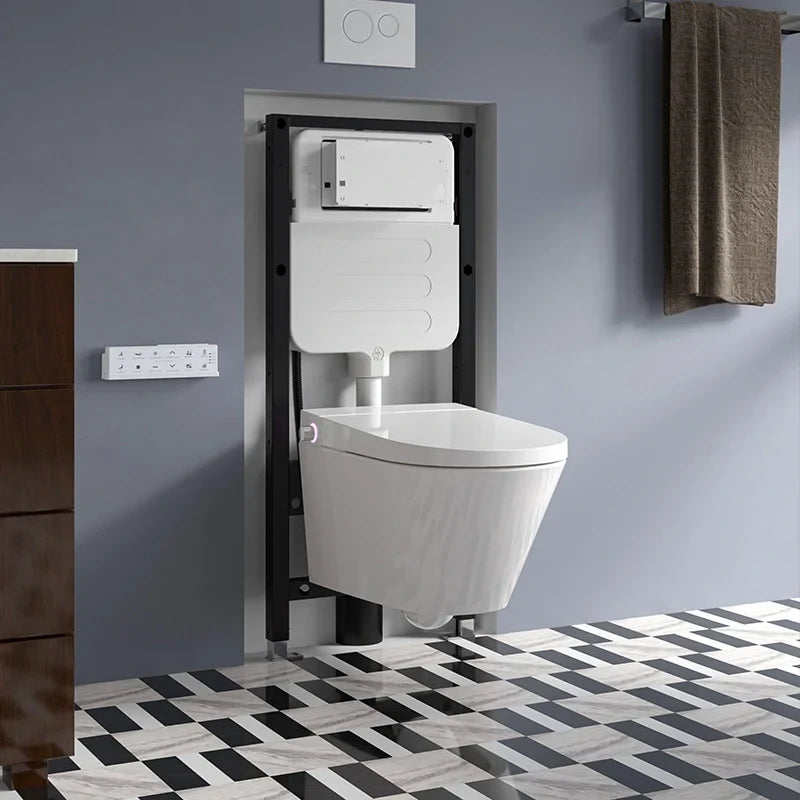
| Pros of Wall-Hung Toilets | Cons of Wall-Hung Toilets |
|---|---|
| Space Efficiency: Wall-mounted toilets free up floor space and make the bathroom feel more open. The hidden water tank can save up to 10 inches of space. | Complex Installation: Installation requires wall reinforcement, making it more difficult and often needing professional help. |
| Hidden Tank: The tank is concealed in the wall, enhancing the bathroom’s spacious and minimalist appearance. | Repair Challenges: Concealed tanks may complicate repairs, and fixing issues could require accessing the wall. |
| Comfortable Height: The toilet’s height is customizable, allowing you to install it at the most comfortable height for users. | Frequent Adjustments: The mounting system may loosen over time, requiring regular maintenance. |
| Easy Cleaning: With no contact with the floor, cleaning underneath the toilet is easier and more ergonomic. | Weight Limitations: Most models support up to 500 pounds, though some higher-end options can support up to 800 pounds. |
| Sleek Aesthetic: A modern, clean look with the tank hidden out of sight for a streamlined design. | Higher Costs: Wall-hung toilets are generally more expensive due to their specialized design and additional features. |
Question And Answer
Are wall-hung toilets suitable for small bathrooms?
Yes, wall-hung toilets are a great option for small bathrooms. Since the tank is hidden in the wall and the toilet is suspended above the floor, it saves valuable floor space and creates a more open and airy feel. Not only does this design maximize available space, it also makes cleaning easier by eliminating hard-to-reach areas around the base. Its sleek, minimalist look visually expands space, making small bathrooms less cramped.
How do you access the tank in a wall mounted toilet?
The internal components of a wall-mounted toilet tank can be accessed through the flush actuator panel (a push-to-flush panel). The panel is designed to be removable and can be accessed through an access port on the rear of the panel. This access port allows you to reach key components such as the water inlet valve, flush valve and other devices that need adjustment or repair. Most manufacturers provide clear instructions in their installation manuals on how to safely remove the panel and access the internal components - without opening the wall.
Is a wall-hung toilet good or bad?
When creating a modern bathroom, a wall hung toilet is a top choice for both beauty and sturdiness. There is no need to worry about its sturdiness as long as it is mounted in place with a certified wall-mounted frame. It can withstand even heavier weights, not to mention 500 pounds. Its suspended design is space-saving and design-rich. The key is that it's very easy to clean - there's no gap between the base of a traditional toilet and the floor. A quick mop and all the stains in the dead space are gone. Although it is indeed troublesome to install and the initial investment is more than a regular toilet, the cleanliness, fashionable style and space utilization advantages it brings can definitely make up for these minor shortcomings in the long run.
Are wall hung toilets safe for heavy people?
You really don't have to worry about the safety of a wall hung toilet! As long as they're installed with a certified in-wall frame system, they're stable even for heavier people. Typical models can hold at least 500 pounds, and some reinforced models can carry up to 800 pounds - the key is to securely fasten the frame to a wall stud or sturdy backboard. Users should avoid dropping heavily on the seat during normal use. As long as these small details are followed, wall-mounted toilets are just as reliable as regular floor models.
Does a wall hung toilet need a frame?
Yes, wall-mounted toilets must be installed with a sturdy in-wall frame, also known as a load-bearing system. This frame holds the full weight of the toilet and the user, as well as accommodating concealed tanks, plumbing connections, and mounting hardware. It is firmly anchored to the floor and wall studs to ensure that the toilet is stable and secure. Without this frame, the wall alone would not be able to handle the load.
Why are wall hung toilets so expensive?
On the one hand, the design of wall hung toilet is really advanced and the suspended-on-the-ground shape looks very high-tech; on the other hand, it is too difficult to install, requiring a special wall frame and a tank hidden in the wall. Complex plumbing also needs to be re-routed and the wall needs to be removed and reinforced at any time. In addition, wall-mounted toilets have a higher appearance than other toilets, with smooth lines and simple styling. Although it cost a lot of money at first, after installation, many users find it worth it. It saves space, is easy to clean, and instantly elevates the bathroom several notches.
How much weight can a wall mounted toilet hold?
Properly installed wall-mounted toilets can typically hold up to 500 pounds (227 kg), which is more than enough for most users. Some heavy-duty models and in-wall bracket systems have been tested to hold 800 pounds (363 kg) or more. The key is proper installation - securing the frame to a post or solid wall structure according to the manufacturer's guidelines and local codes. When properly installed, wall-mounted toilets are as strong and reliable as traditional floor-mounted toilets.
Should you tile behind a wall hung toilet?
When installing a wall hung toilet, tiling behind the wall is something that really needs to be taken seriously! Tile surface is smooth and well cared for, can keep dirt, moisture and bacteria outside, especially those behind the toilet is not good to reach the place, with tile is like adding a layer of protective shield. And tiles can also protect the wall from water damage, stains, with a long time the wall is as good as new. Even if the tank is hidden in the wall, the entire wall is also particularly practical to tile -- both to make the bathroom look more beautiful and unified, and later if you need to repair the toilet, directly to the tile surface operation, clean and convenient, is definitely a once-and-for-all smart approach!
Is a wall hung toilet better than a floor mounted toilet?
Wall-mounted toilets have a number of advantages over floor-mounted toilets, especially when it comes to customization and convenience. Its biggest draw is that the height can be customized on demand. If the family has mobility problems of the elderly, or particularly tall family members, you can install the toilet to the appropriate height. On the contrary, the height of floor-mounted toilet is uniform standards. And wall-mounted toilet's floating design makes you cleaning without the base block. Mop can easily sweep across, no mold leaving. However, it is indeed more expensive than the floor-standing toilet quite a lot, since the installation is complex. Choosing wall hung toilet or floor-mounted toilet, you need to combine the needs of your own homes and budgets.

